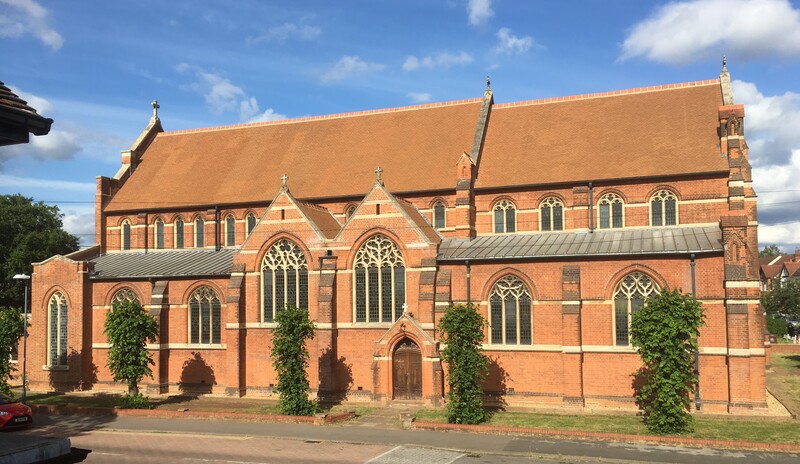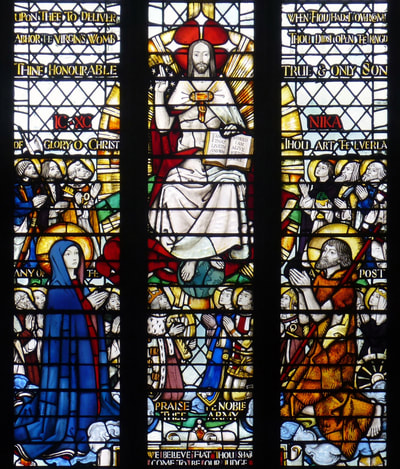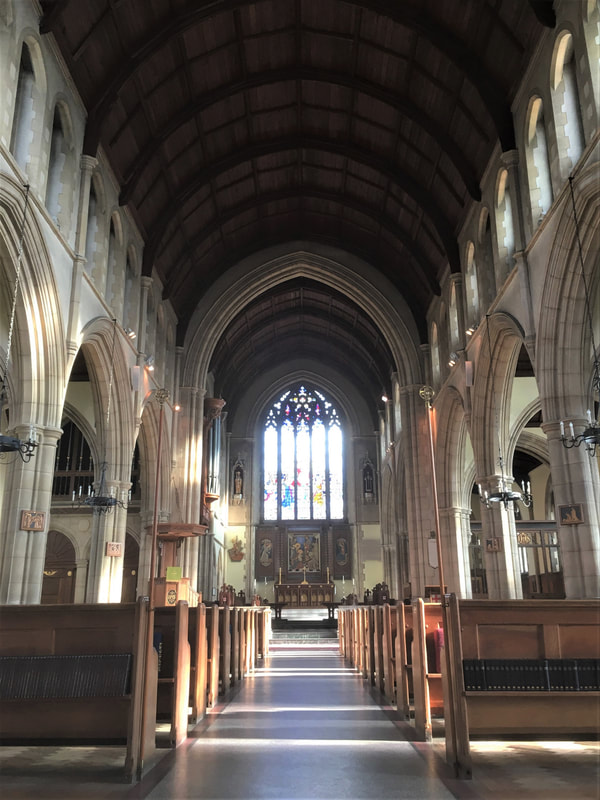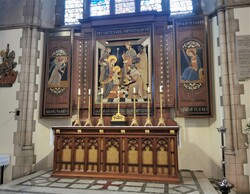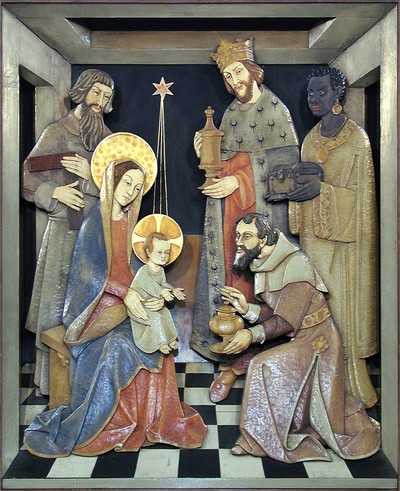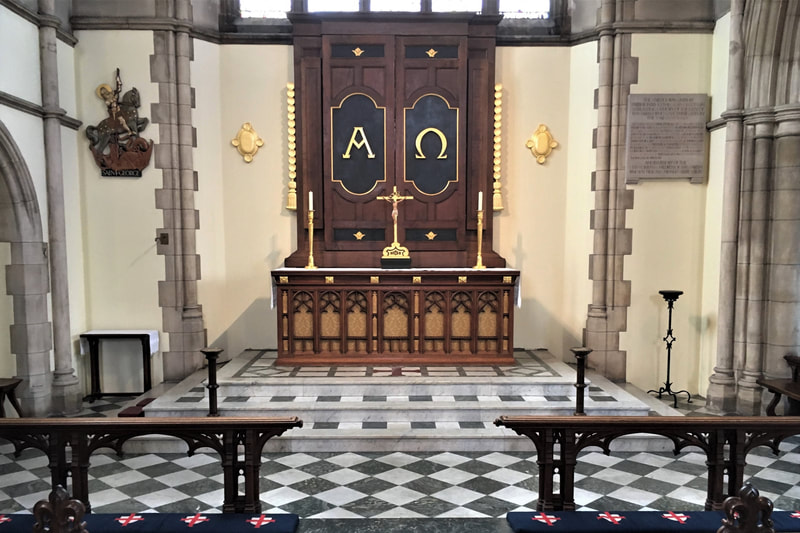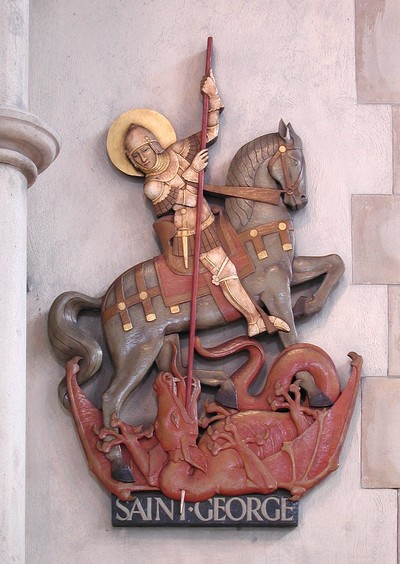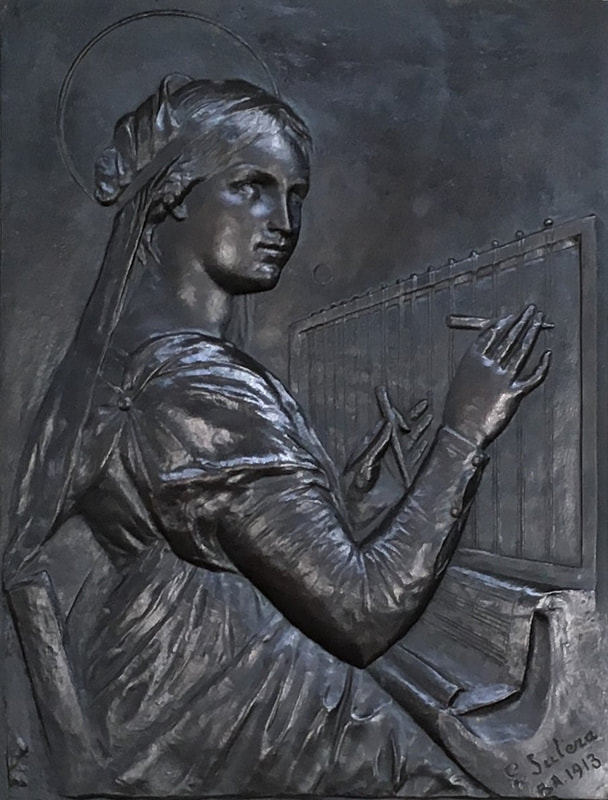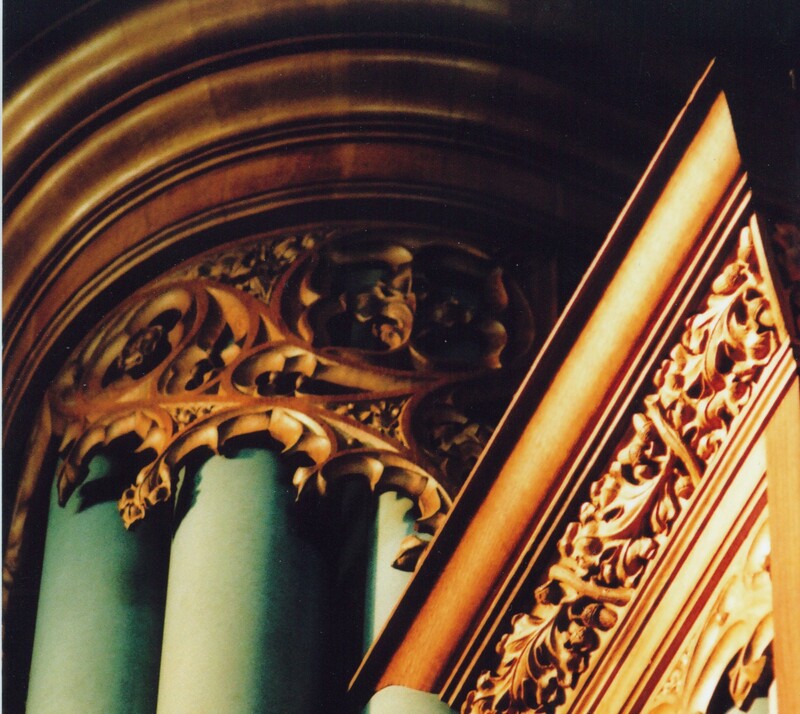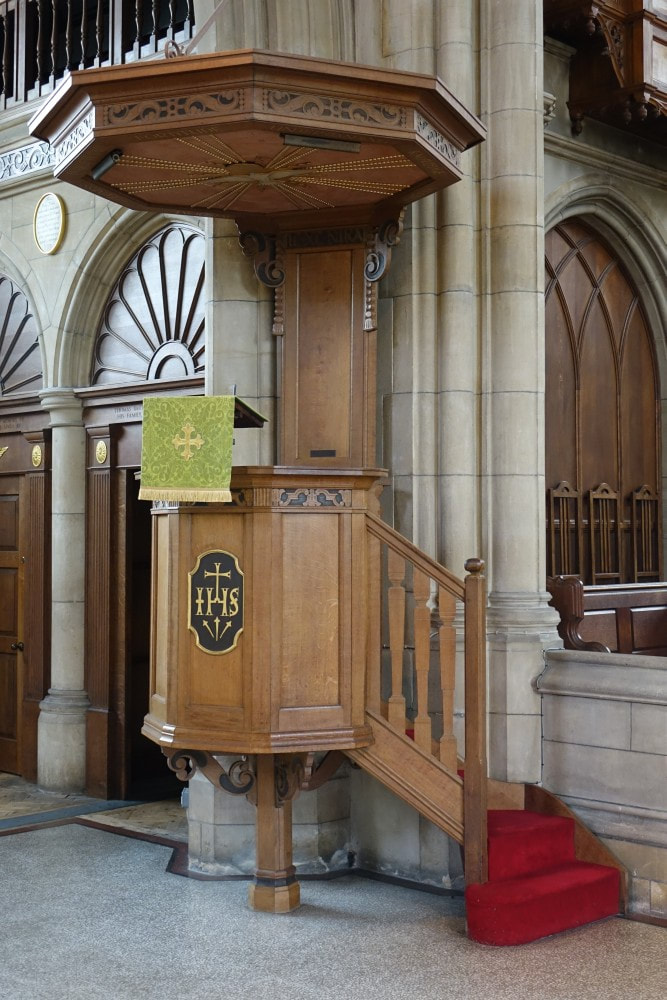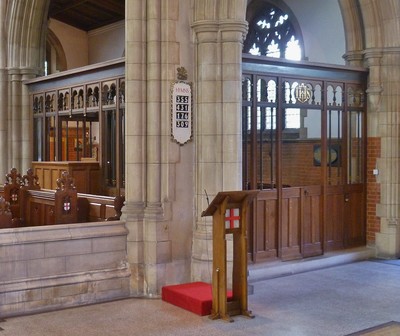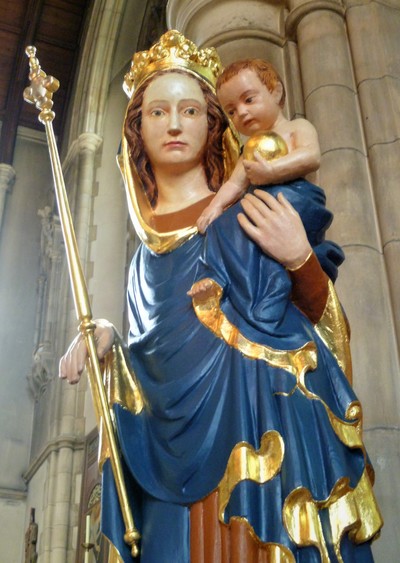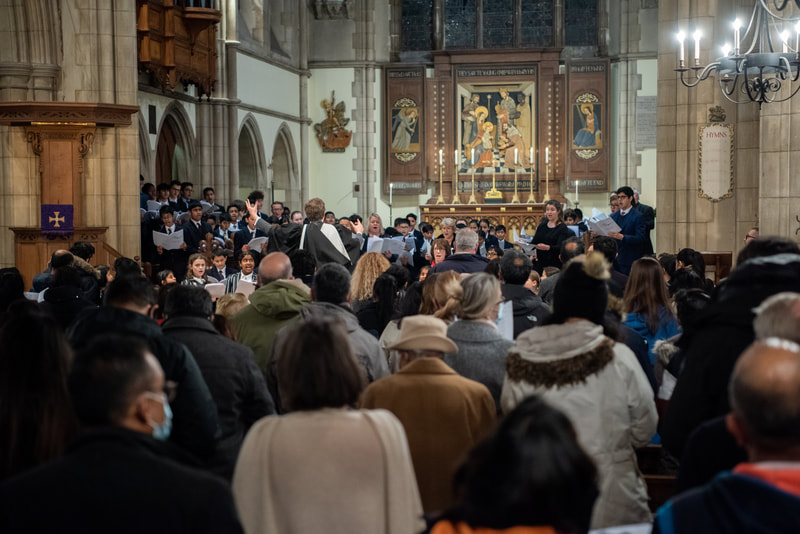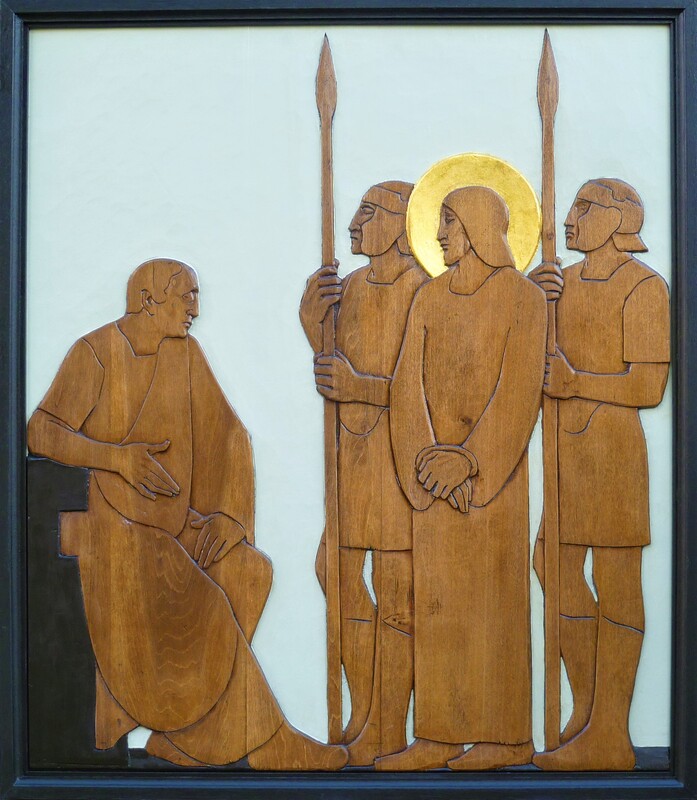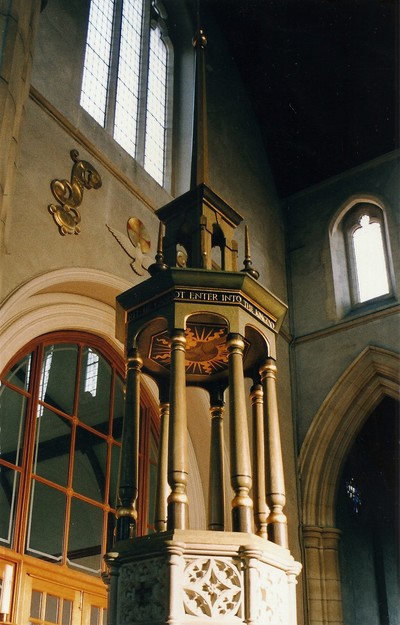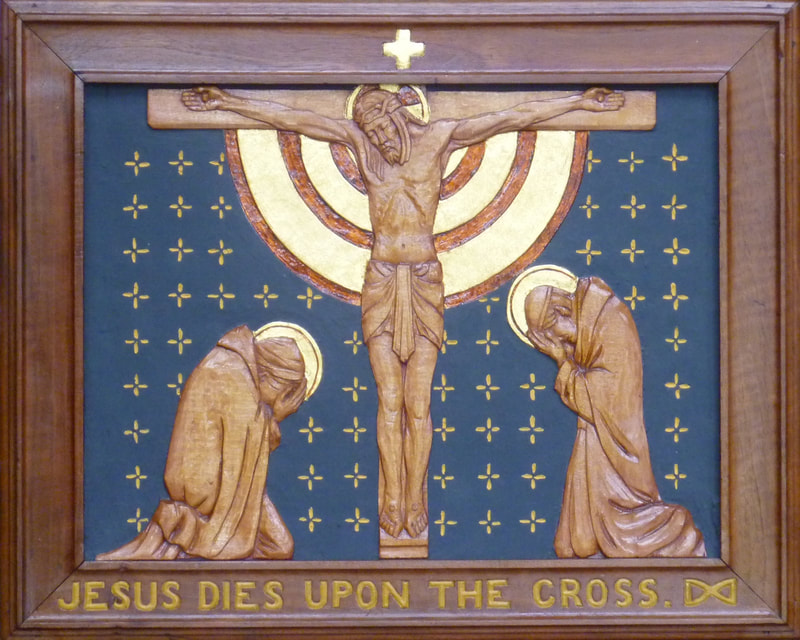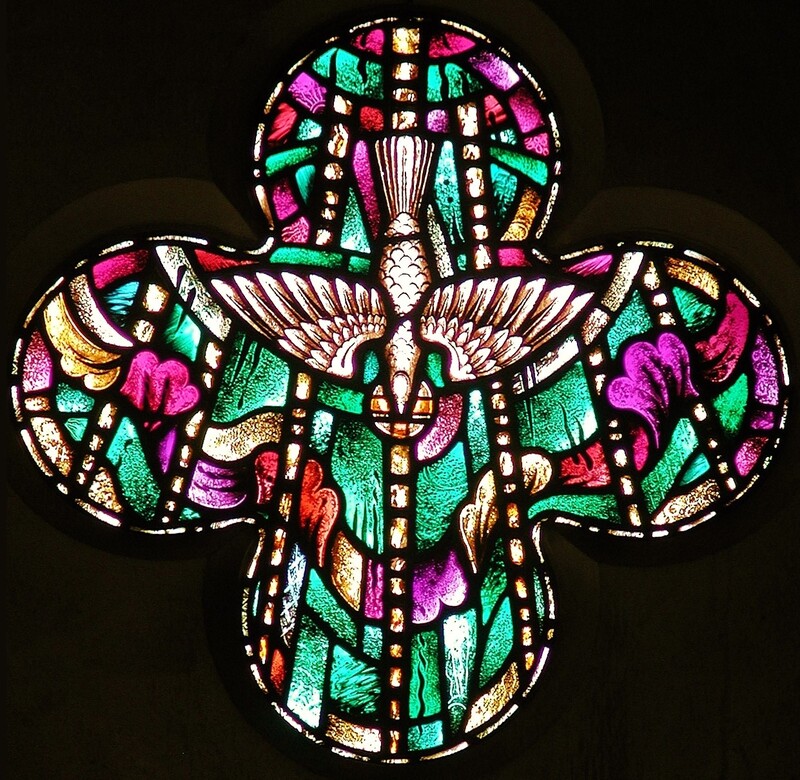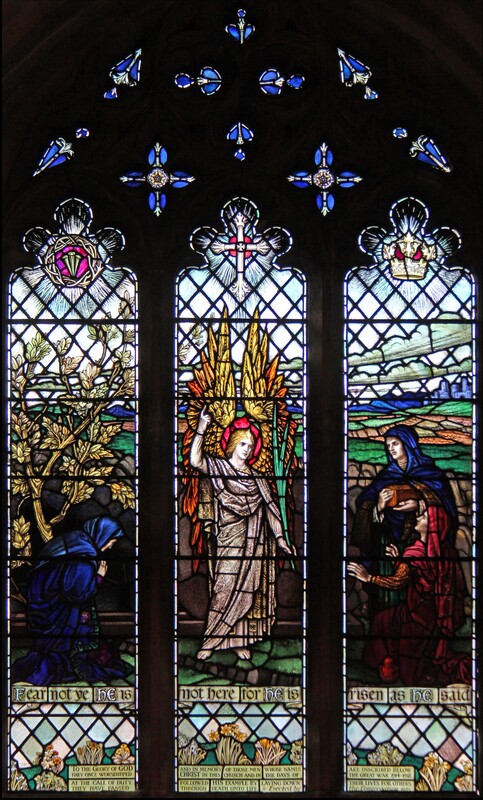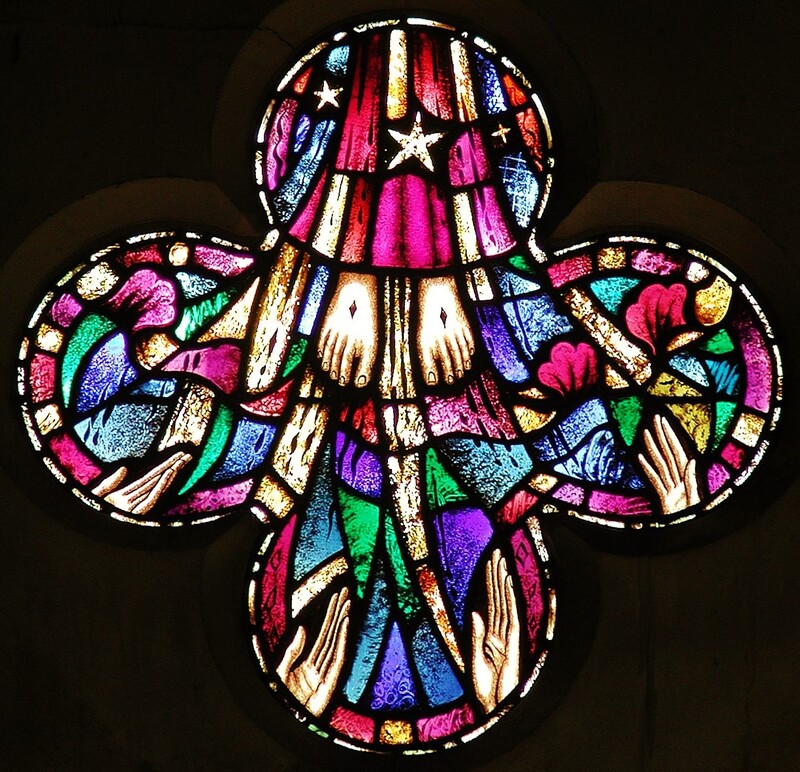St George's Church
|
The main body of the church building, designed by J S (John Samuel) Alder (1847-1919), was consecrated in 1911. In 1947 Judith Scott of the Council for the Care of Churches wrote that she was ‘impressed with the dignity and fine proportions of the church’ and ‘inclined to think that it is the best thing this architect has ever built. The architectural detail is in the true line of the Gothic tradition; he has used massive timbers and the best materials obtainable, and used them with great skill and a certain subtlety … (it) promises, when it is complete, to be one of the best early twentieth century churches in the diocese.’ The west end, to a new design incorporating a narthex with ancillary rooms, was completed in 1961.
The cohesive character of the church's interior is largely due to the rich ensemble of glass and furnishings by leading twentieth century ecclesiastical artist Martin Travers (1886-1948) and his long-standing sculptor and chief assistant John E Crawford (1897-1982). Art historian Peter Cormack observes that 'unlike Comper – the other well-known luminary in the field and under whom Travers trained for a while – Travers was committed to an original and modern interpretation of diverse stylistic traditions'. The largest of Martin Travers’ windows are in St George’s, Headstone, and the Great Hall of The Arts Centre, Christchurch, New Zealand (originally Canterbury College). The St George’s ‘Te Deum’ great east window was installed in 1937; its design was exhibited at the Royal Academy in 1938. 'It is in his characteristic style of the 1930s, which blends elements derived from late 15th-century English/French stained glass with an attractively contemporary style of drawing. As always in Travers' work, the lettering is beautifully designed and plays an important part in the overall design' (Peter Cormack). Furnishings and fittings by Martin Travers include the high altar crucifix, pulpit, west wall Holy Dove, Lady Chapel statue of the Virgin and Child, and Lady Chapel reredos and candlesticks. Works in the Travers style by John Crawford are the relief-carved high altar reredos, east wall plaque of St George and the dragon and Second World War memorial tablet, the Lady Chapel screens, font cover, and Travers studio stations of the cross on the walls of the nave. For more about Martin Travers' and John Crawford's work at St George's click here. The church contains stained glass by Powell & Sons/Whitefriars, installed over a period spanning more than ninety years. In addition to windows designed by William Aikman, E Liddall Armitage and Alfred Fisher, there are two comprising Whitefriars Norman Slab glass leaded to a design by Christopher Whall. For more about Whitefriars glass at St George's click here. The building has a 'loop' system for the hard-of-hearing (turn hearing aids to 'T'). Ramps give wheelchair access to the west door and to the high altar rail. Wheelchair spaces are available in the nave and there is a wheelchair-accessible WC in the narthex. |
|

